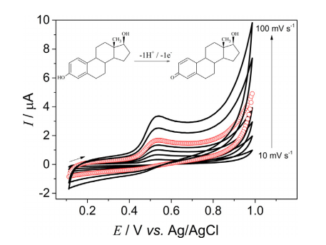
CO2 Laser Glazing Treatment of a Veneering Porcelain: Effects on Porosity, Translucency, and Mechanical Properties
Abstract: This work tested CO2 laser as a glazing agent and investigated the effects of irradiation on the porosity, translucency, and mechanical properties of veneering porcelain. Sixty discs (diameter 3.5 x 2.0 mm) of veneering porcelain for Y-TZP frameworks (VM9, VITA Zahnfabrik) were sintered and had one of their faces mirror polished. The specimens were divided into six groups (n=10/group) according to surface treatment, as follows: no treatment-control; auto-glaze in furnace following manufacturer’s instructions (G); and CO2 laser (45 or 50 W/cm(2)) applied for four or five minutes (L45/4, L45/5, L50/4, L50/5). Optical microscopy (Shimadzu, 100x) was conducted and the images were analyzed with Image J software for the determination of the following porosity parameters: area fraction, average size, and Feret diameter. The translucency parameter studied was masking ability, determined by color difference (Delta E) over black and white backgrounds (CM3370d, Konica Minolta). Microhardness and fracture toughness (indentation fracture) were measured with a Vickers indenter (HMV, Shimadzu). Contact atomic force microscopy (AFM) (50 x 50 mu m(2), Nanoscope IIIA, Veeco) was performed at the center of one sample from each group, except in the case of L45/5. With regard to porosity and translucency parameters, auto-glazed and laser-irradiated specimens presented statistical similarity. The area fraction of the surface pores ranged between 2.4% and 5.4% for irradiated specimens. Group L50/5 presented higher microhardness when compared to the G group. The higher (1.1) and lower (0.8) values for fracture toughness (MPa.m(1/2)) were found in laser-irradiated groups (L50/4 and L45/4, respectively). AFM performed after laser treatment revealed changes in porcelain surface profile at a submicrometric scale, with the presence of elongated peaks and deep valleys.
Author(s): Sgura, R; dos Reis, MC; Salvadori, MC; Hernandes, AC; Cesar, PF ; Medeiros, IS
OPERATIVE DENTISTRY
Volume: 40 Pages: 247-254 Published: MAY-JUN 2015
DOI: 10.2341/14-079-L




